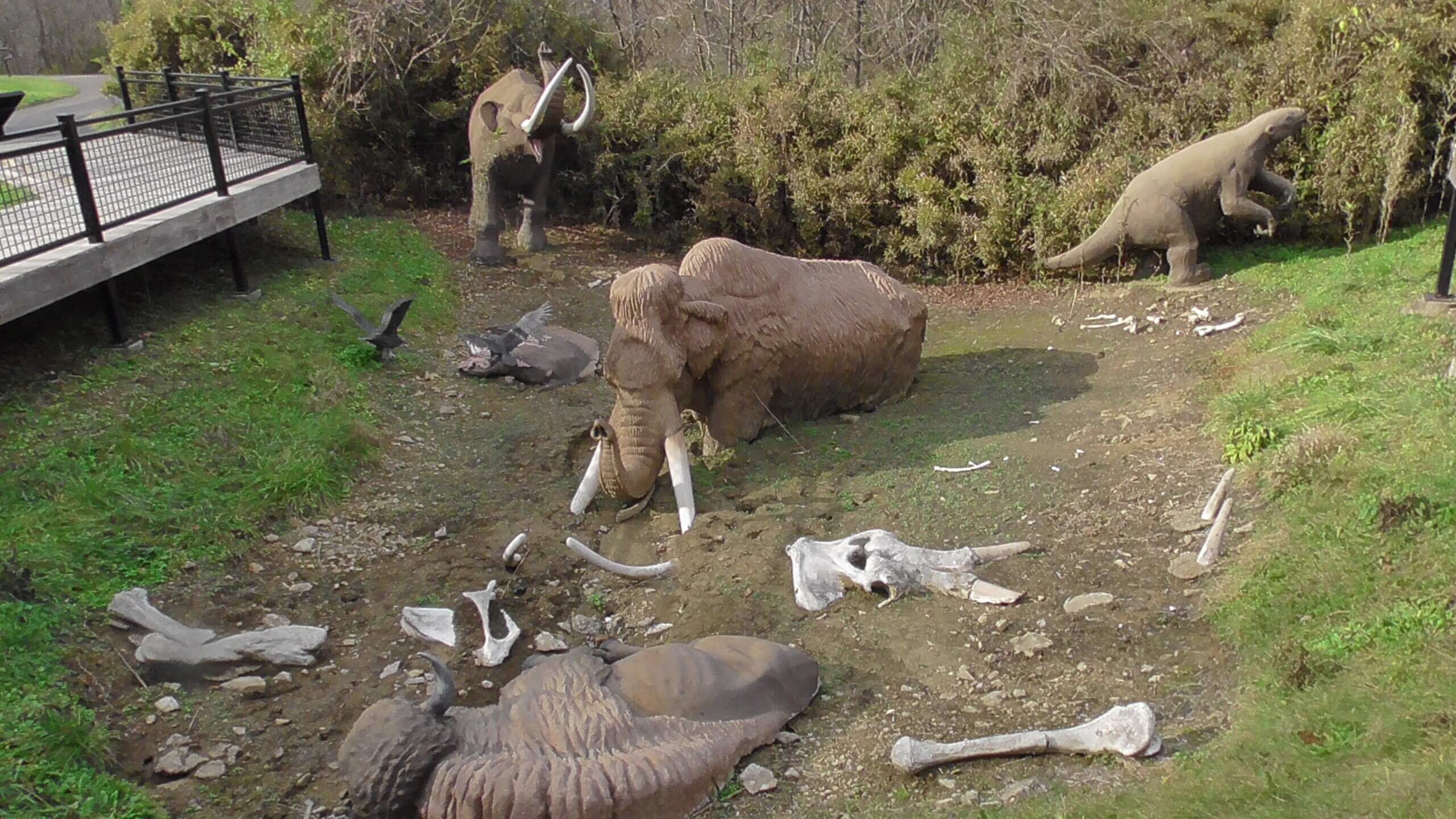Big Bone Lick State Park, Kentucky
A Pleistocene ice sheet covered the ground all the way from Canada down to the Ohio River 15,000 years ago. On the edges of this ice sheet, great herds of giant mastodons, wooly mammoths and ground sloths were attracted to the warm salt springs that still bubble from the earth at Big Bone Lick State Park.
The salty marsh that attracted these prehistoric visitors sometimes proved to be a fatal attraction. Some animals may have been trapped by what early pioneers called “jelly ground,” leaving skeletons. More recently, the theory is that early Native Americans ambushed their prey in conditions where the animals would have trouble fleeing or fighting back.
The fossilized remains of these prehistoric animals were discovered in 1739 and it was well known by educated men in colonial times. Thomas Jefferson asked Meriwether Lewis to stop by this salt lick before he joined William Clark on the famous Lewis and Clark Expedition.
Notable Americans such as Thomas Jefferson and Benjamin Franklin personally examined the fossils and the scientific community recognizes the site as the “Birthplace of American Vertebrate Paleontology”.
Bones that were covered by ancient floods are still found today as the Big Bone Creek exposes bones as it meanders.
Unfortunately both the salt springs and the museum were closed when I was there. The scenario reminded me of La Brea Tar Pits.

